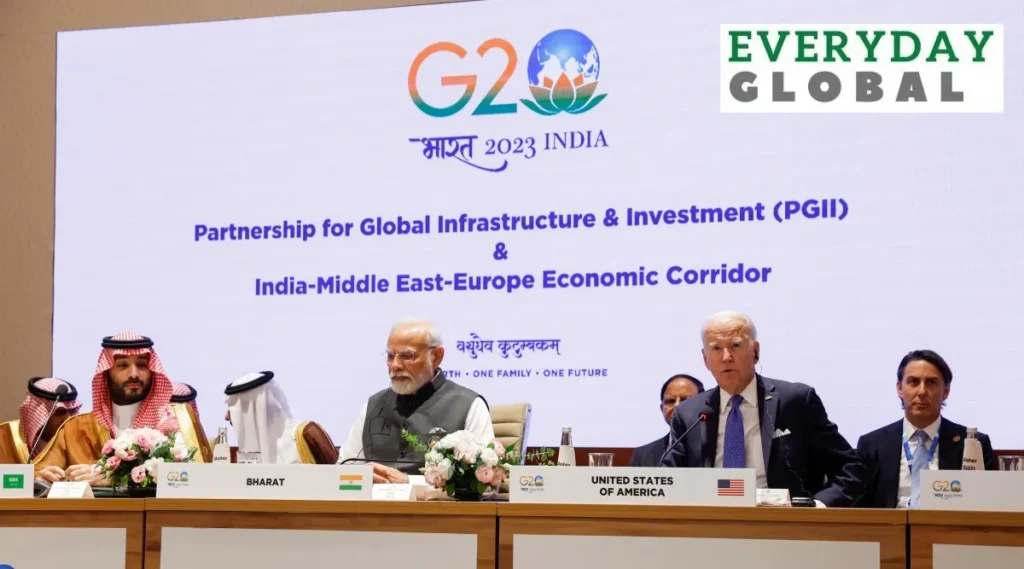Table of Contents

Image sources: global infrastructure partners
Global infrastructure partners: Infrastructure can offer resilience in uncertain times, income, and protection against inflation.
Infrastructure, which includes telecom networks, utilities, and other essentials of modern society, is on the cusp of an important change to which you may contribute.
Emerging economies require a variety of essential services, particularly in rapidly developing areas. Developed economies aged key infrastructure, such as bridges and water utilities, need advancements. Building blocks for a more developed and digitally related society and a more environmentally friendly global energy future must be put in place.
The sum of capital required will be considerably more than what the government can offer. Take power: By 2050, cities are expected to install more than four million miles of sewage and water pipes as well as an average of more than two million miles of power lines. This is just one illustration of the reasons underlying the continued increase of the private infrastructure market’s record-breaking growth rate.
High investment returns are an additional possible advantage for global infrastructure partners. Infrastructure is essential and cannot be neglected, which is one of the reasons. We all require it continually, both in happy and struggling economies. Moreover, returns generally don’t move the same way that stock or bond returns do, thus (like other real assets) infrastructure is an independent diversifier. There is also an inherent inflation hedge because utility allegations are linked by regulators to rises in the cost of living.
Opportunities like significant inflation protection, portfolio variety, consistent income flow potential, and past outperformance in turbulent periods are hard to come by.
Let’s explore the reasons underlying our excitement for infrastructure investment.
1. Infrastructure across the world requires an enormous amount of investment.
With approximately two billion more people living on the earth by 2050, metropolitan populations worldwide will need an increase in essential services like electricity, clean water, fiberoptic lines, and transportation.2 We expect an ongoing rise in spending on digital infrastructure, which will prop up demand for networks and data centers.
The possibility extends outside of growing markets as well. For example, 27% of American households do not have adequate or any internet connection because it is either unavailable or prohibitively costly. In numerous places, the “last mile”—homes, places of employment, and retail establishments—still needs to be linked by fiber optic cable instead of copper.
70 percent of electrical systems in the US are well into the second part of their lives. About water: Around 6 billion gallons of purified water are lost every day due to water main breaks occurring every two minutes in the United States. The public sector cannot afford to deal with it on its own.
The average annual need for infrastructure is severely underfunded.
Sources: McKinsey Global Institute, J.P. Morgan Asset Management. 31.08. 2022.

Credit: REUTERS
2. Traditionally, global infrastructure partners is less volatile than bonds and stocks and strong when GDP slows.
We believe the case is strong: Infrastructure has offered some stability, especially in 2022 when bonds fell 11.2% and global markets lost 17.7%. Six Historically, it has also provided consistent revenue and, on occasion, an important return increase for investors ready to forgo mobility. These appealing attributes attract private investors, and we anticipate that ongoing fundraising inflows will maintain infrastructure asset prices.
We expect that major disruptions will continue this year, no matter whether there is a recession, slower economic growth, or if central banks continue to raise interest rates to regulate inflation.
Utilities offer several alternatives for passing cost increases on to customers when there is inflation. Thus, you could want to search for this kind of revenue from infrastructure: a contract, regulated, and inflation-indexed.
Also, because core infrastructure has a history of doing well during the market and economic cycle ups and downs, its capacity for resilience may mitigate portfolio shocks and maintain the consistency of the cash-flow return delivered by those “essential” assets.
Over time, private infrastructure has surpassed public infrastructure in terms of returns and volatility.
Source: Preqin. Bloomberg data represents annualized monthly returns—data from January 2008 through September 2022.
3. Many investment opportunities have been created by the costly and urgent energy shift to carbon reduction.
Renewable energy is a top goal for many governments, asset owners, and global organizations to replace the use of fossil fuels. While reducing carbon emissions many industries (manufacturing, transportation, and automobiles), power generation is essential and may be costlier than headlines suggest.
For economies to meet their 2030 net-zero targets, there will need to be a substantial rise in wind power capacity, solar power generation, and battery storage capacity. Based on estimates, $750 billion is required year, which offers up a wide range of private market opportunities, from venture capital investments in creative, cutting-edge technology to later-stage buyouts focusing on more established, profitable businesses in every aspect of infrastructure.
The U.S. Price Control Act, which was passed in August 2022, is one indicator that infrastructure has substantial backing. The law offers financial incentives to businesses and households to switch to green energy. Even though it is a ten-year plan, it will take time to come into effect and should assist upcoming, more appealing potential customers.
Image sources: global infrastructure partners
4. National energy security is a goal by countries.
The dependence of Europe on Russian gas was made apparent by the war in Ukraine, which provided a global warning that diversifying one’s energy sources might be essential to geopolitical security. To do so, the economies of Europe need large investments.
Since many government policies currently promote domestic energy development, both new and built on old (“brownfield”) locations, we think that the risk/return outlook is positive. Also, fossil fuel-based infrastructure is expected to be a part of the global energy mix for a long time to come due to its affordability and energy security. This also creates investment opportunities that decrease the carbon footprint of old buildings and improve efficiency.


Pingback: Hertz car rental customer service: Contact Number, Customer Support, Office Address, Official Website